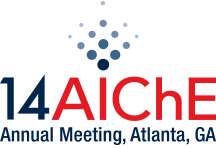

Graphitized porous carbon supports was incorporated with dispersed catalytic sites, i.e. transition metal (Ni/Fe) through in-situ thermochemical synthesis or liquid-reduction deposition. The graphene structure and nano-scale active metal particles were characterized with TEM, SEM, XRD, Raman, TGA/DSC, physical and chemical adsorption. The advantages of in-situ thermochemical synthesis approach are in scalable chemical modification at the nanoscale and in tuning the surface active groups for selective lignin conversion. We assume that catalytically active metals distributed in porous grahitized carbon matrix will result in higher selective of lignin liquefaction and specific reaction pathways towards formation of aromatic derivatives in hydrothermal conditions. Lignin depolymerization products were analyzed and quantified with GC-MS. Mechanism of catalysts' deactivation was discussed based on characterization of fresh and used catalysts.
Presenter(s)
Once the content has been viewed and you have attested to it, you will be able to download and print a certificate for PDH credits.
If you have already viewed this content,
please click here
to login.
